Submitted by WA Contents
MVRDV built demountable office and laboratory with 90 per cent recyclable materials in Amsterdam
Netherlands Architecture News - Jun 07, 2023 - 15:31 3193 views

MVRDV has built a demountable office and laboratory in the heart of Amsterdam Science Park, in which over 90 per cent of the building's materials can be recycled and reused.
Named Matrix One, the 13,000-square-metre building consists of offices, laboratories, education spaces and restaurant alongside key social spaces and amenities.
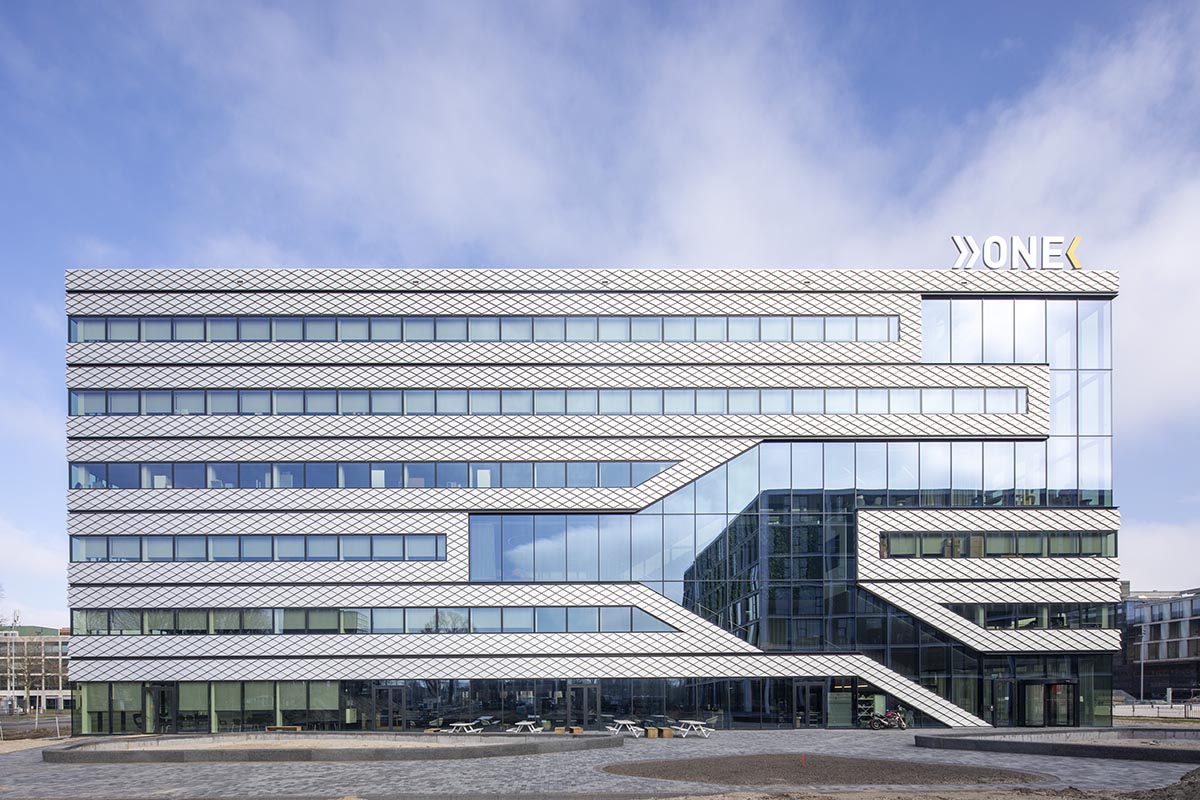
Taking sustainbale design at its core, the project also pushes the boundaries of sustainability - starting from demountable construction, the “social stairs”, and solar energy generation to smart lighting and generous amounts of bicycle parking.
"It incorporates sustainable thinking from every possible angle," according to MVRDV.
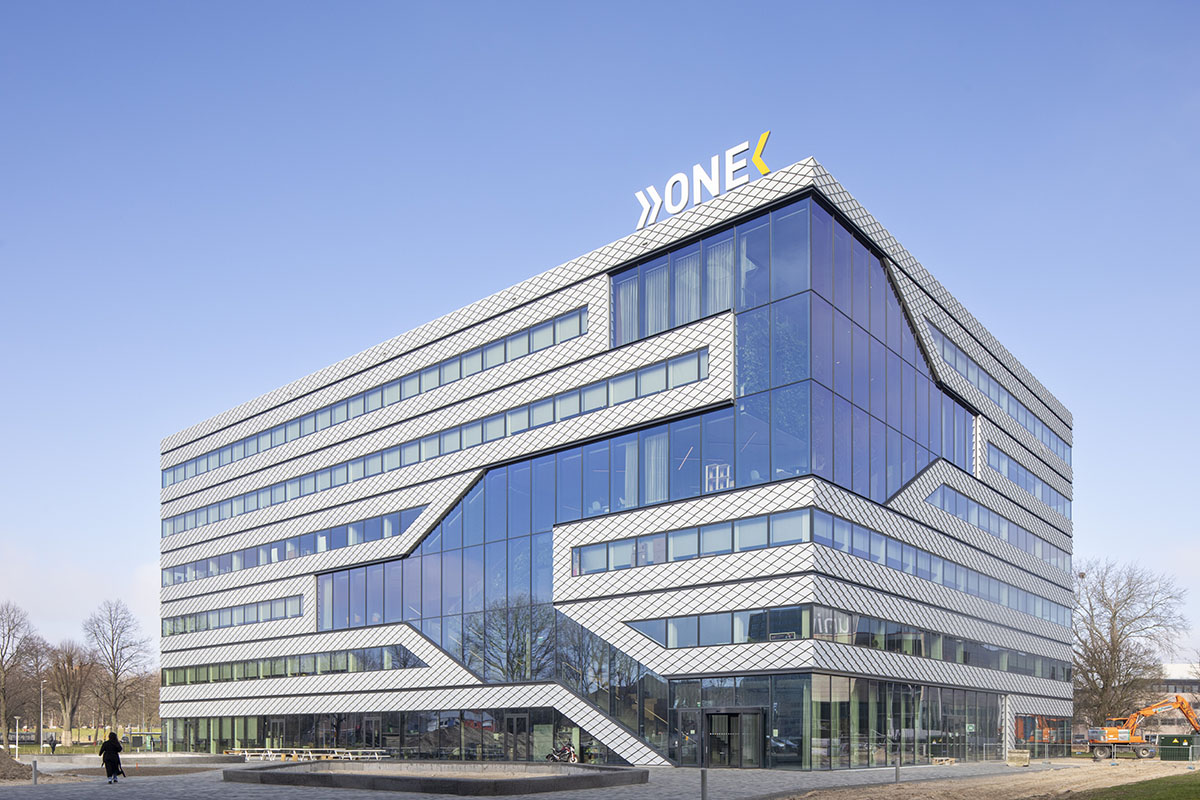
The building also meets ambitious Amsterdam targets for energy use and is certified BREAAM-Excellent. The building's users are also working on sustainability solutions: the University of Amsterdam's SustainaLab works here on technologies for a sustainable future.
Matrix One is the largest of seven buildings that now make up the Matrix Innovation Center, part of Amsterdam Science Park, where scientists and entrepreneurs work on sustainable solutions for current and future problems.
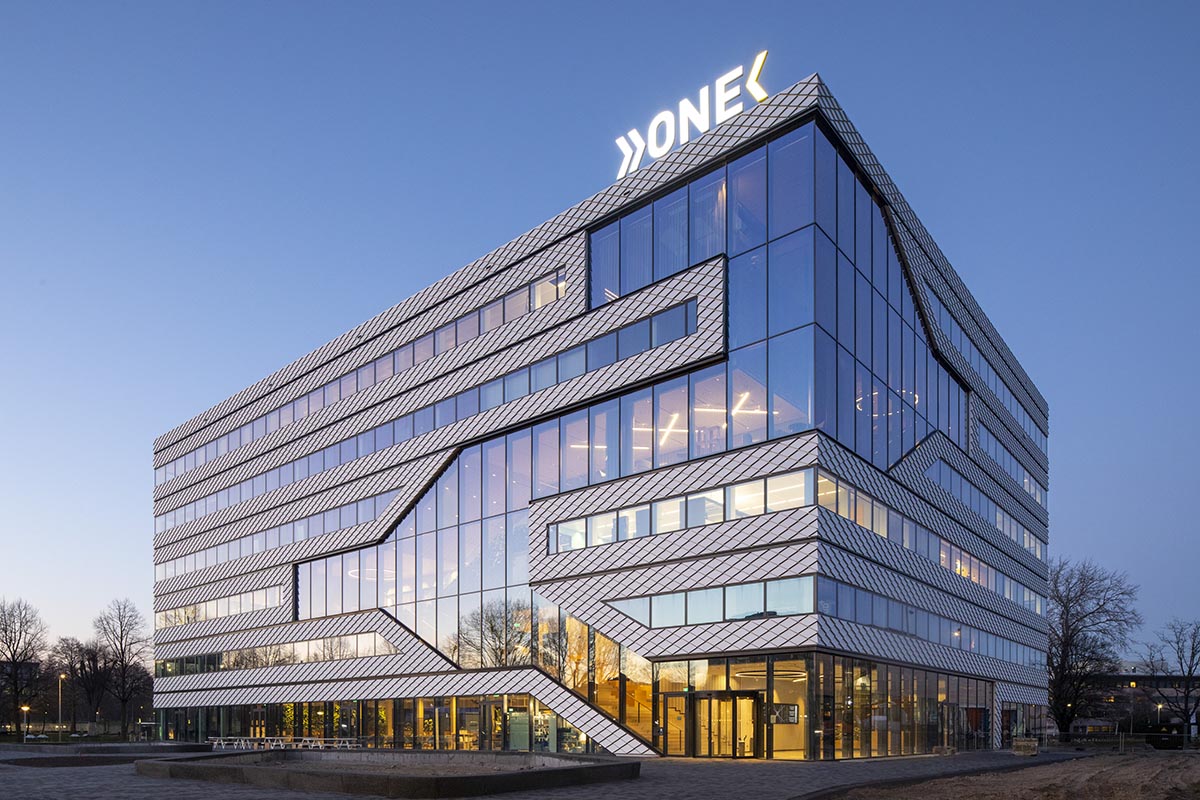
The building itself contains a mixture of science laboratories and offices for tech companies including Qualcomm and sustainability companies such as Photanol, Skytree, and the startup FUL Foods.

As the main building of the Matrix Innovation Center, according to the studio, "Matrix One aims to be a sustainable example for the other buildings in Amsterdam Science Park and beyond."
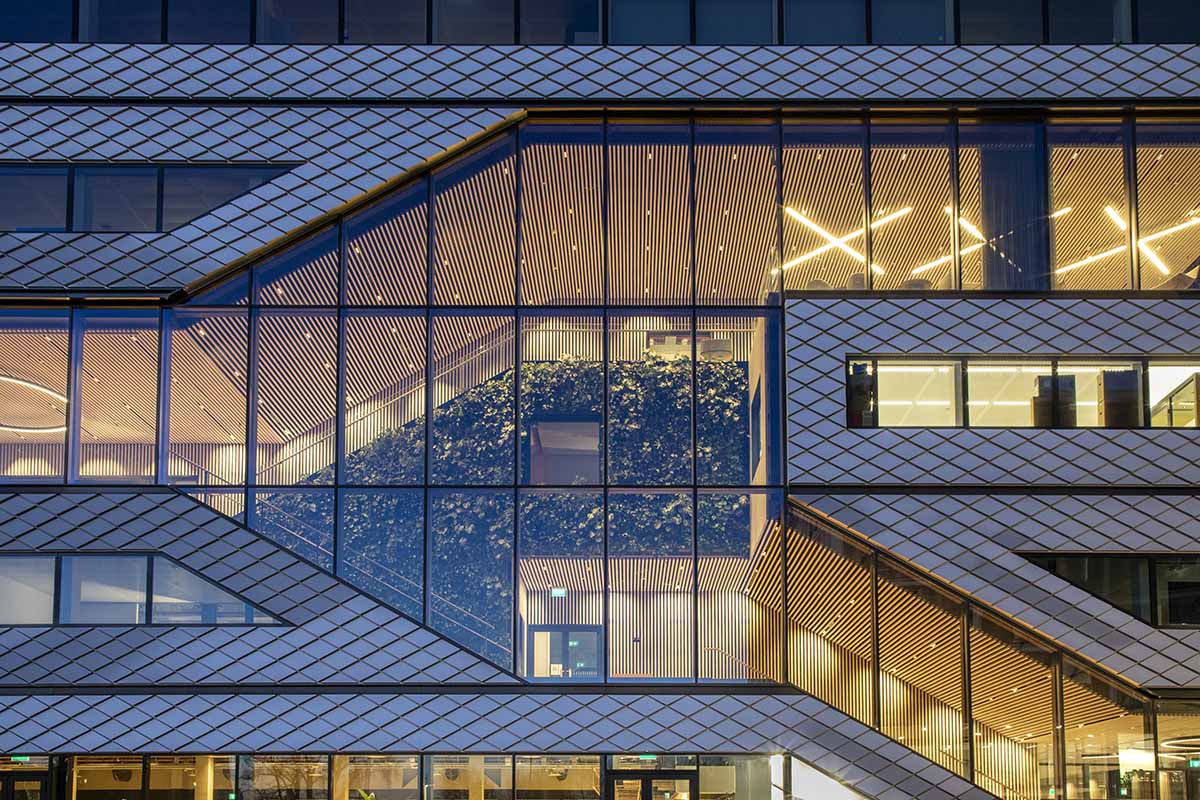
The global architecture firm MVRDV has envisioned the building "to be demountable", with simple connections such as screws and bolts allow elements to be detached and reused when various parts of the building are updated.
Even the building’s floors are made using prefabricated concrete slabs with no fixed connections, allowing them to be reused at the end of the building’s lifespan.

By using a platform, called Madaster, for the project, according to the studio, "the platform provides a comprehensive material passport system to give insight into the materials and products used and the CO2 storage for over 120,000 individual components."
As a result, over 90 per cent of the building’s materials can be reused again later.

On the roof, the studio implemented a 1,000-square-metre of solar panels that generate a portion of the building’s energy, while internet-connected lighting and heating fixtures help to reduce energy consumption. Power for critical lab equipment runs on a separate circuit.
"With this combination of energy generation and reduced energy consumption, the building itself produces a significant proportion of the energy it consumes, and therefore meets the ambitious Amsterdam targets for energy performance," the studio explained.
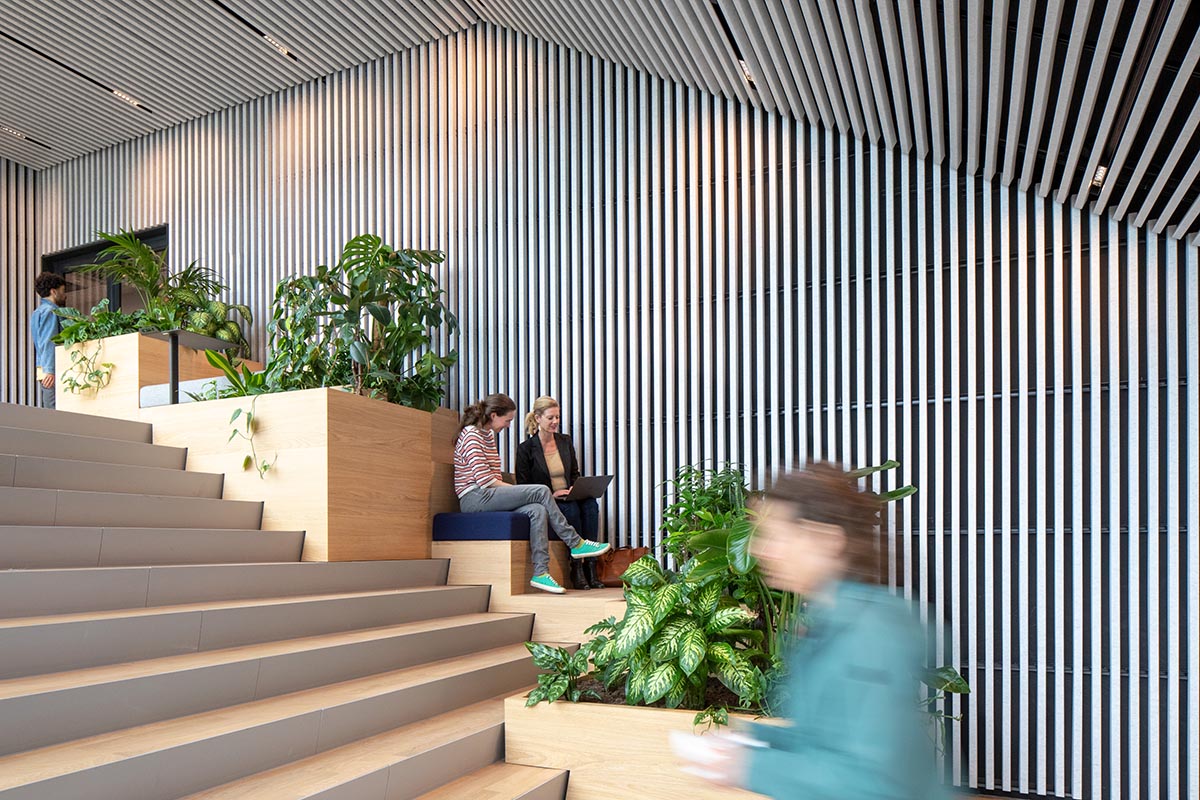
As the main building of the Matrix Innovation Center, Matrix One serves as the social hub of the campus.
A large social staircase becomes a key element of the project, which is situated next to the main entrance on the building’s southern corner.
The design of the staircase is conceptualised as a continuation of the zig-zagging paths that are found throughout the campus.
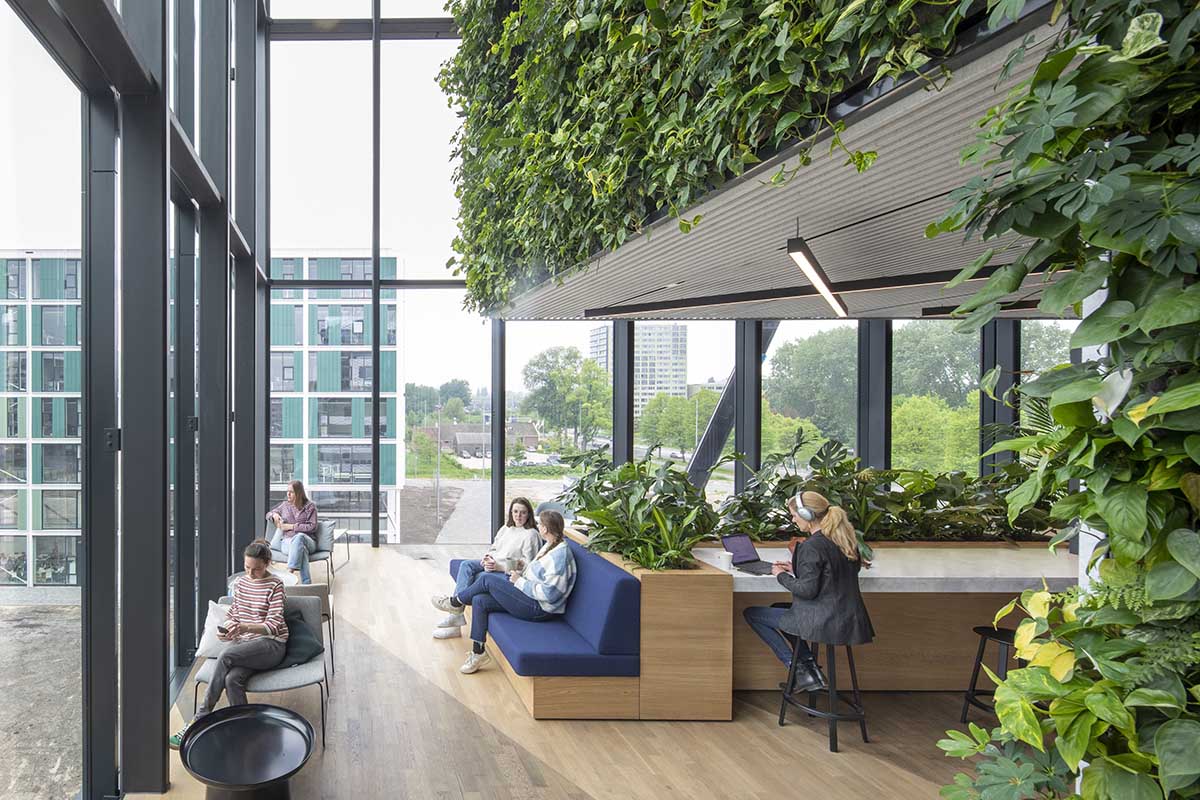
The studio also added a tribune-style seating arrangement to accommodate presentations, tables for informal meetings, and coffee stations.
As the MVRDV team emphasized, "these stairs bring together workers from different industries, allowing them to mingle and share ideas."

The interior design for this space, developed by MVRDV in collaboration with UP Architecture, includes multiple lush green walls that are visible through the glass façade, while soft felt finishes elsewhere dramatically reduce sound reverberation, lending the social spaces a calm and intimate atmosphere.
This social staircase is complemented by the building’s amenities, with a ground floor restaurant and a bar at the top of the staircase.
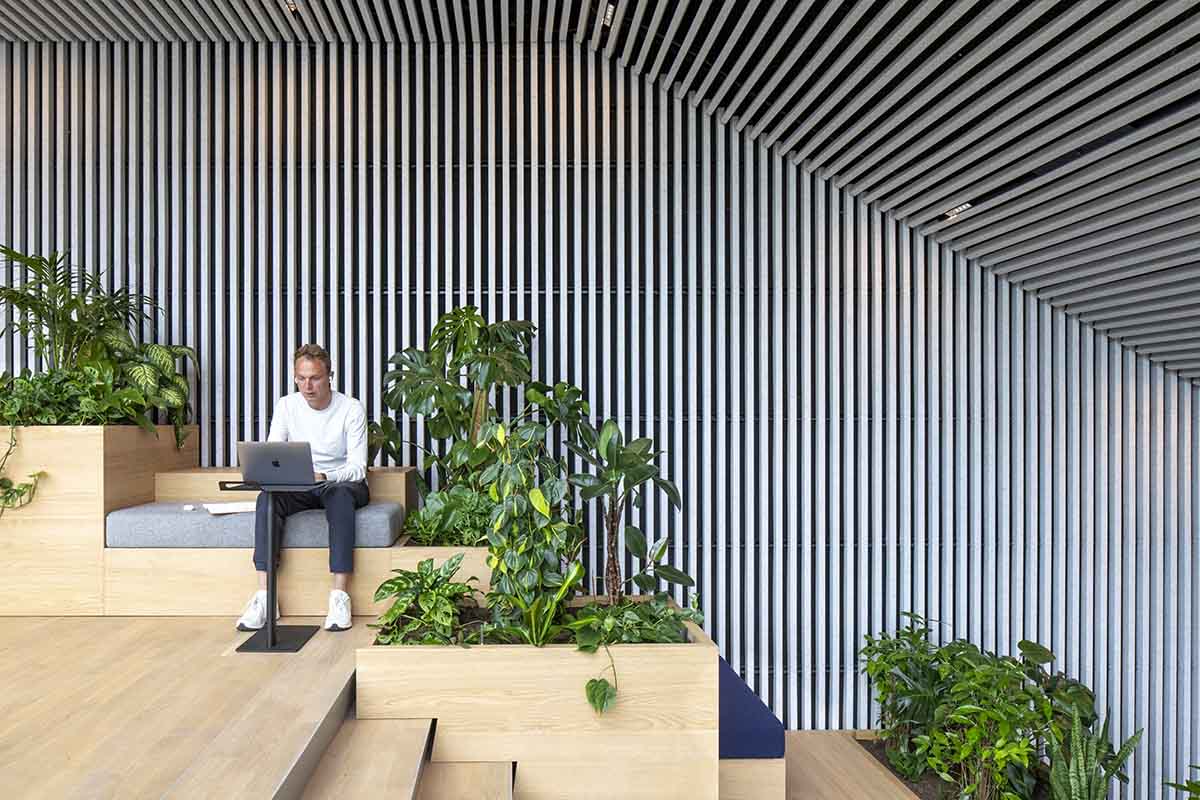
These social features form “Club Matrix”, available for use by workers from all of the surrounding Matrix buildings.
The building also includes an 100-seat auditorium, confirming Matrix One as a central hub for the creation and sharing of knowledge.
"Matrix ONE offered an excellent opportunity for us to test a number of the carbon-reduction strategies we have long been investigating at MVRDV," said MVRDV partner Frans de Witte.
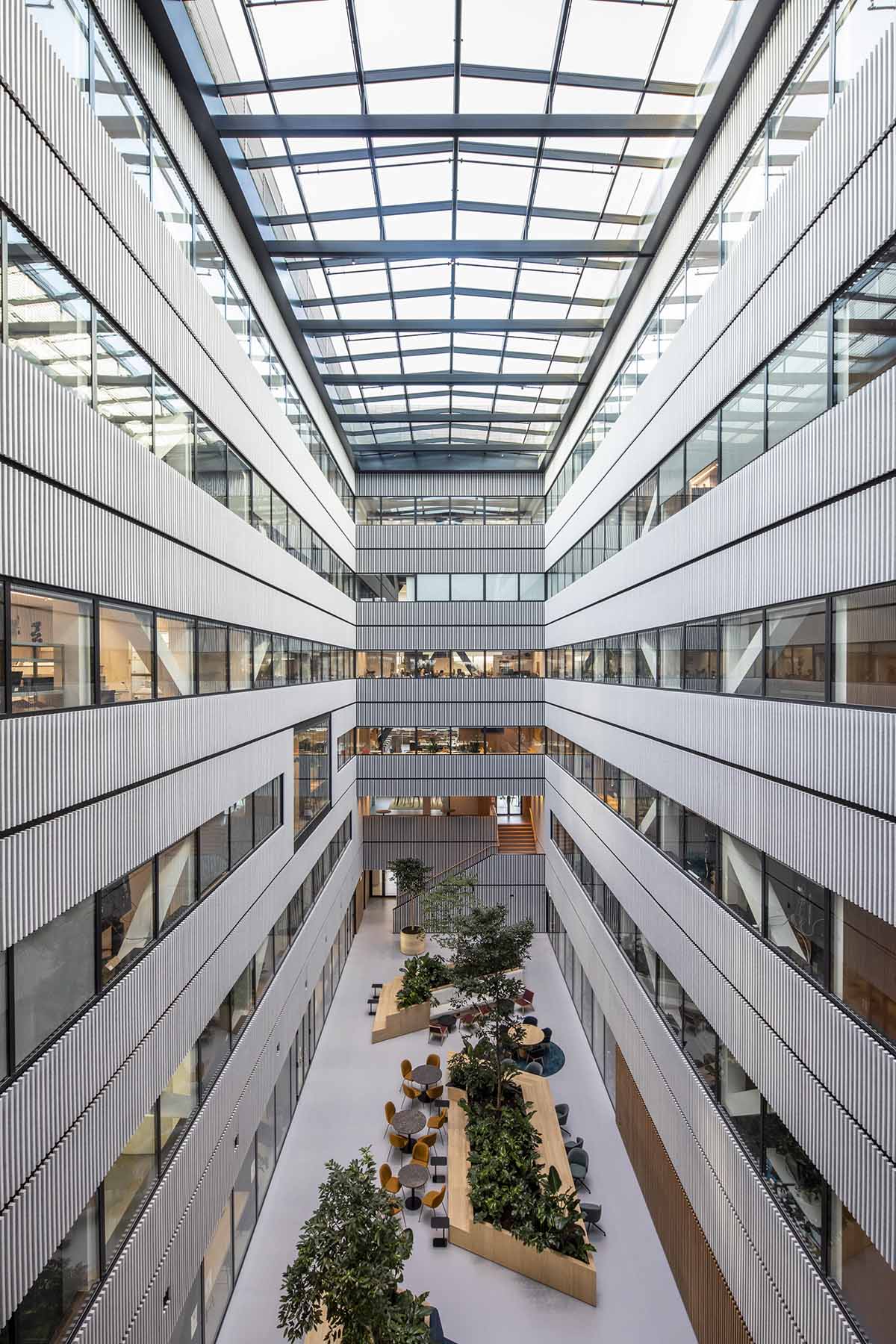
"The building is state-of-the-art now, but it also acknowledges that the state-of-the-art is constantly changing."
"So we made both the interior spaces and the technical installations that serve them as flexible as possible; offices can easily be modified to become labs and vice versa, and labs can be easily upgraded with new systems to accommodate changing standards."
"In the decades to come when the building is no longer cutting-edge, it will become a source to harvest materials from for other buildings. In the future, we hope this is how all buildings will work – and we’re excited to see Matrix ONE become a standard-bearer in our own office," de Witte added.
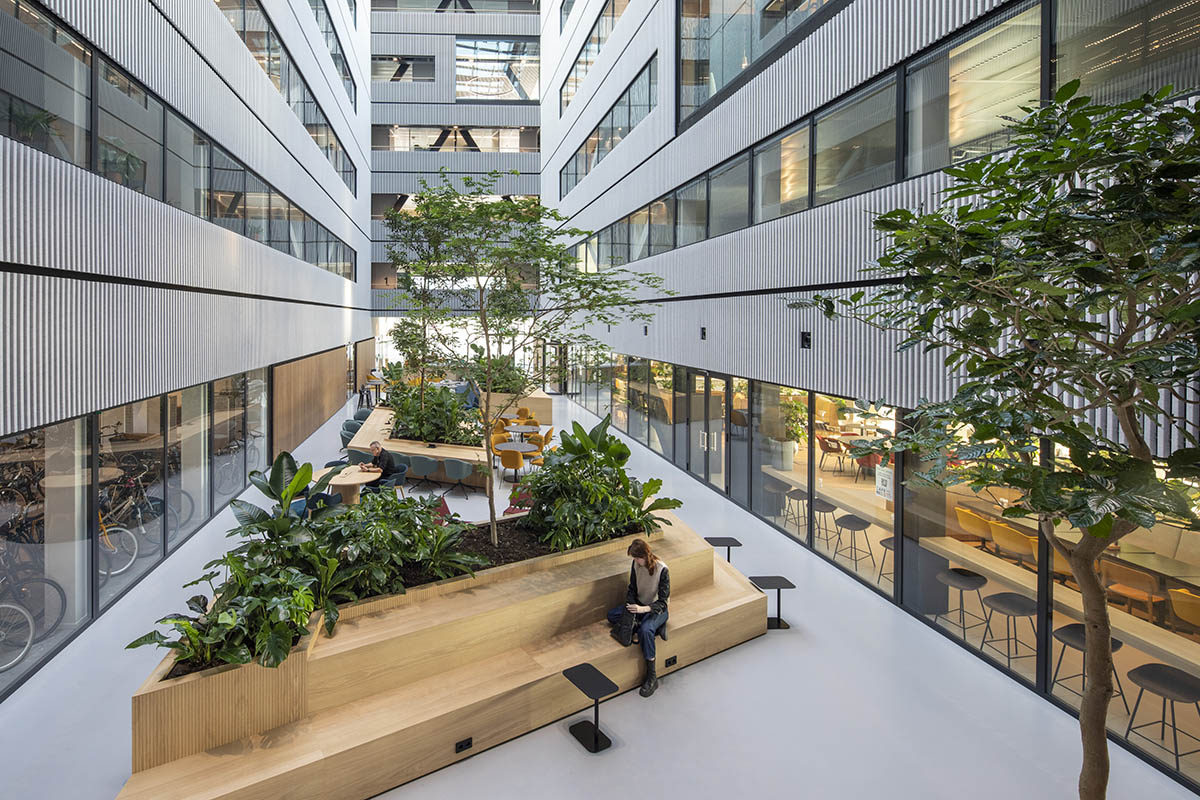
Matrix One is aimed to encourage users to lead a healthy lifestyle, while the location of the social stair encourages people to use the stairs instead of the elevators, which are found deeper inside the building, accessed via the atrium.

On the rear of the building, the building has a secondary entrance that also provides an access to a bicycle parking facility that is directly accessible and visible from the atrium, encouraging those who work in the building to cycle instead of driving.
MVRDV emphasizes that as a result of all these sustainability and health measures, the building was effective in obtaining the BREEAM-Excellent certification.
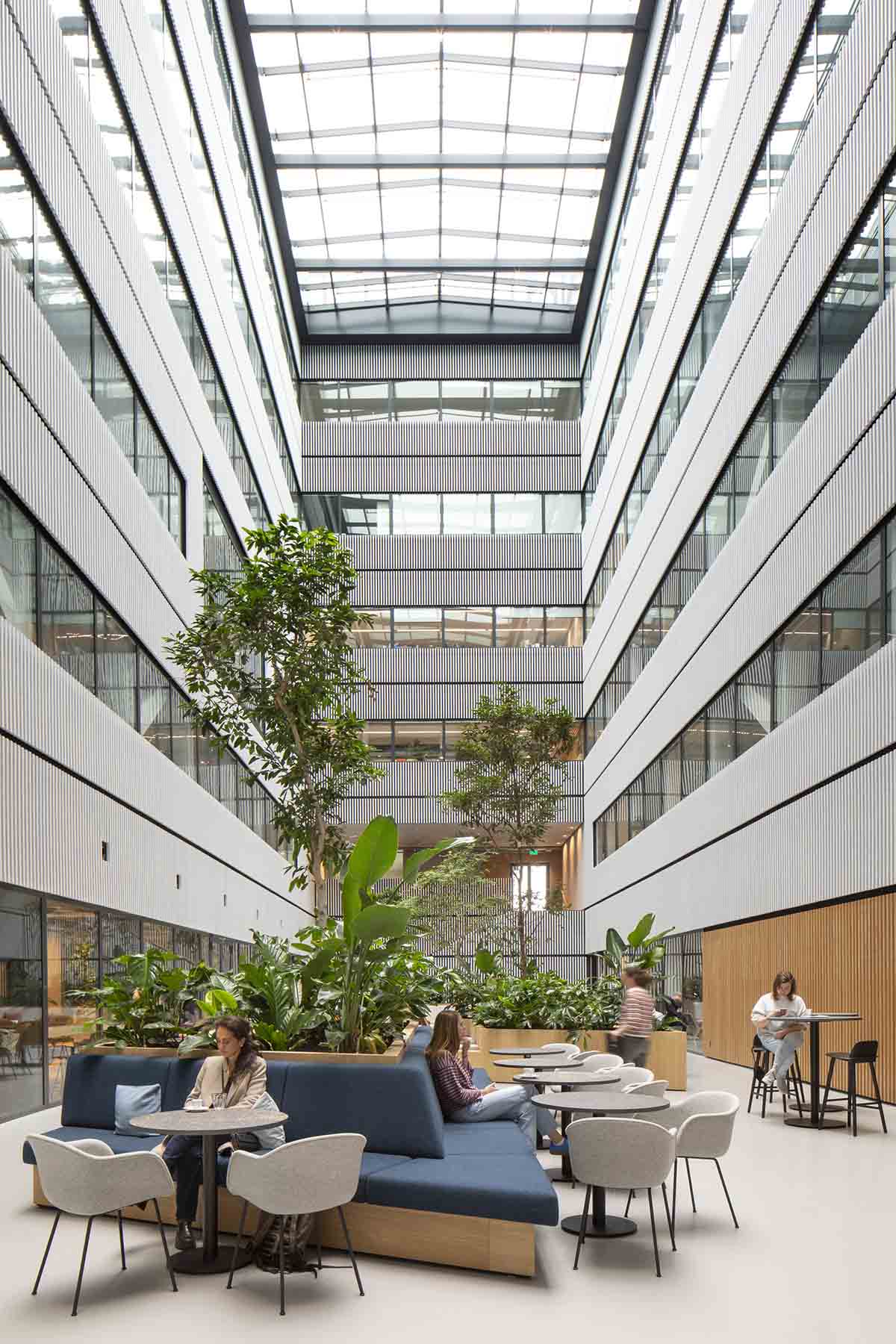
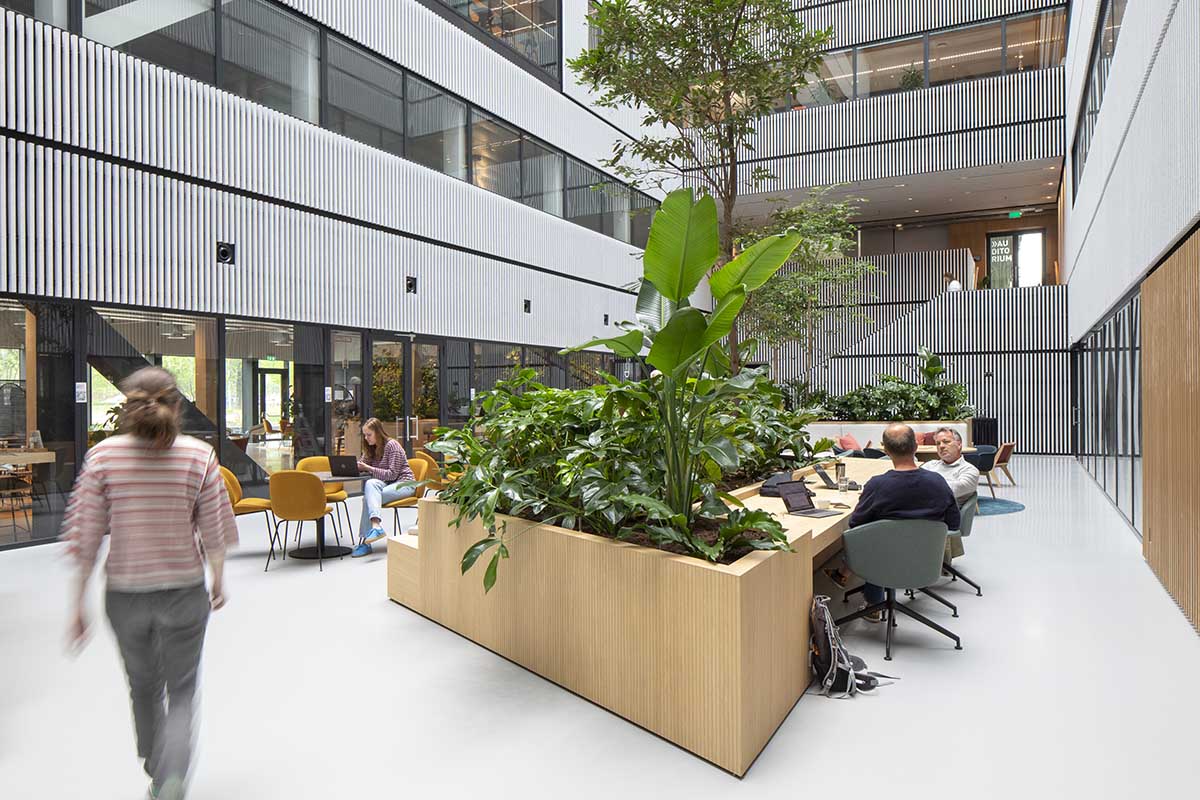
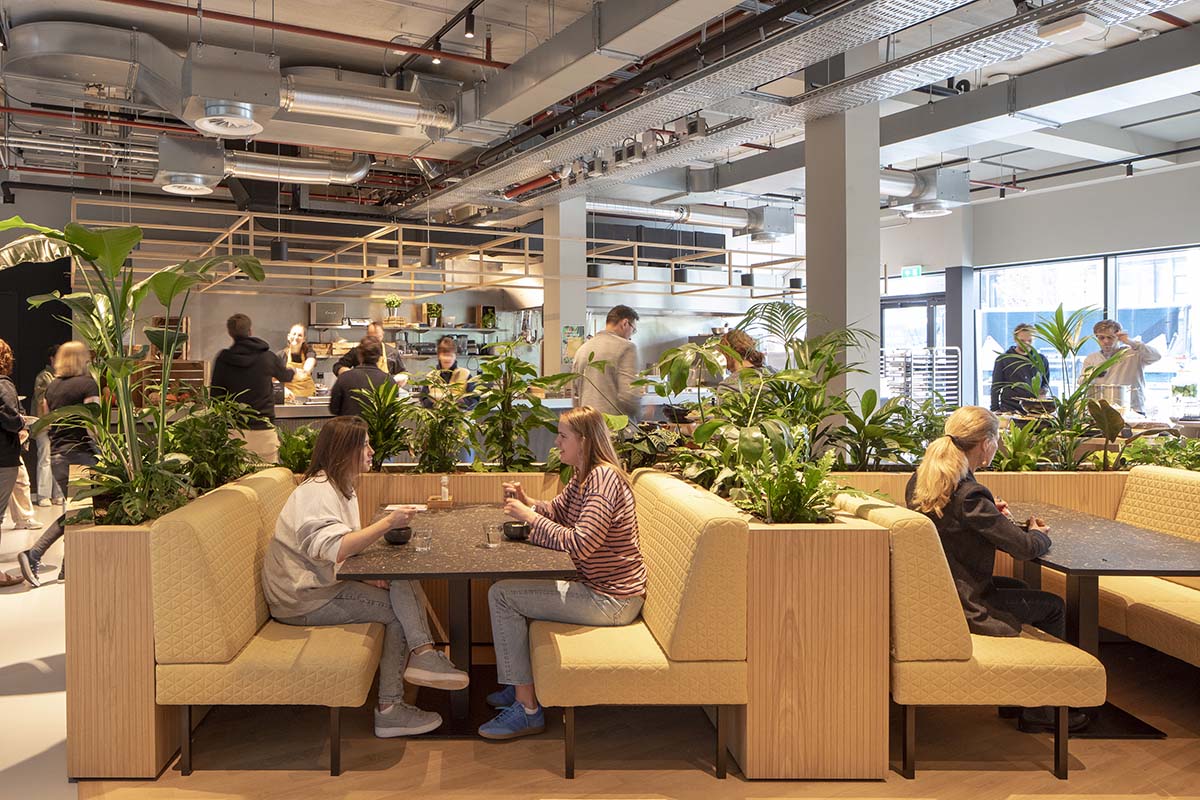

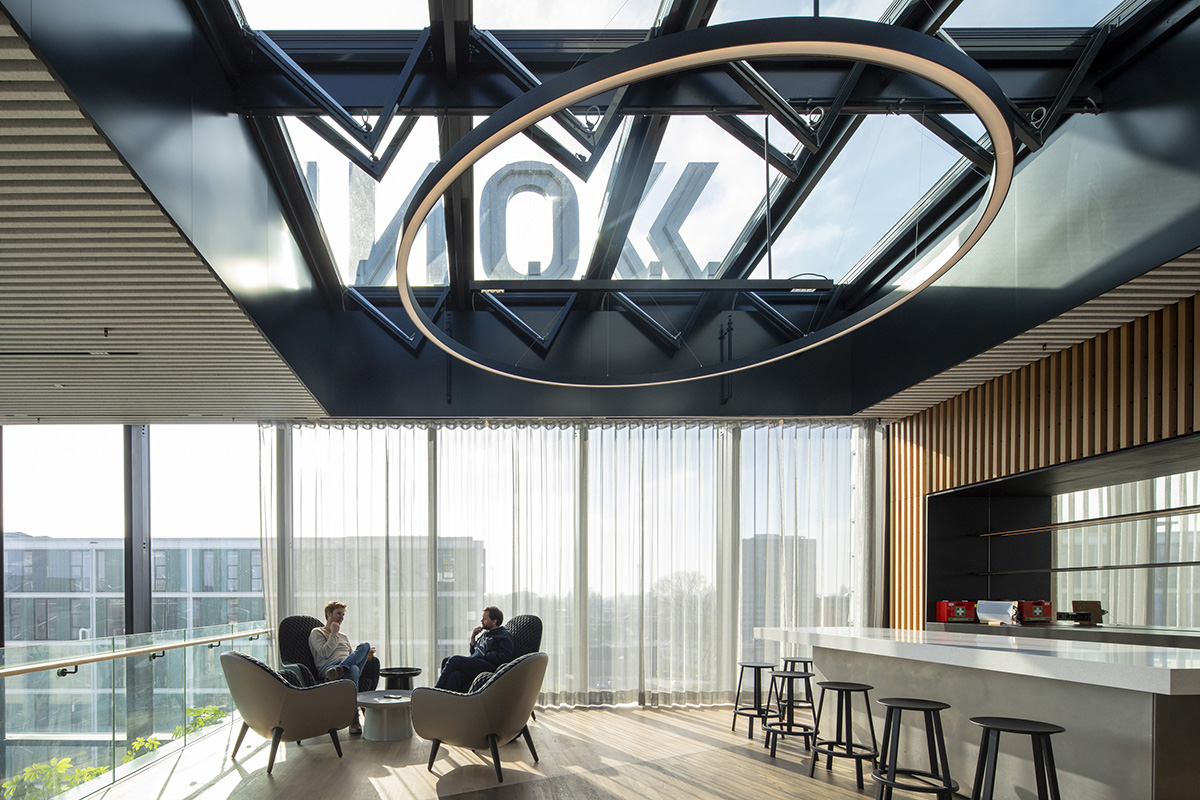


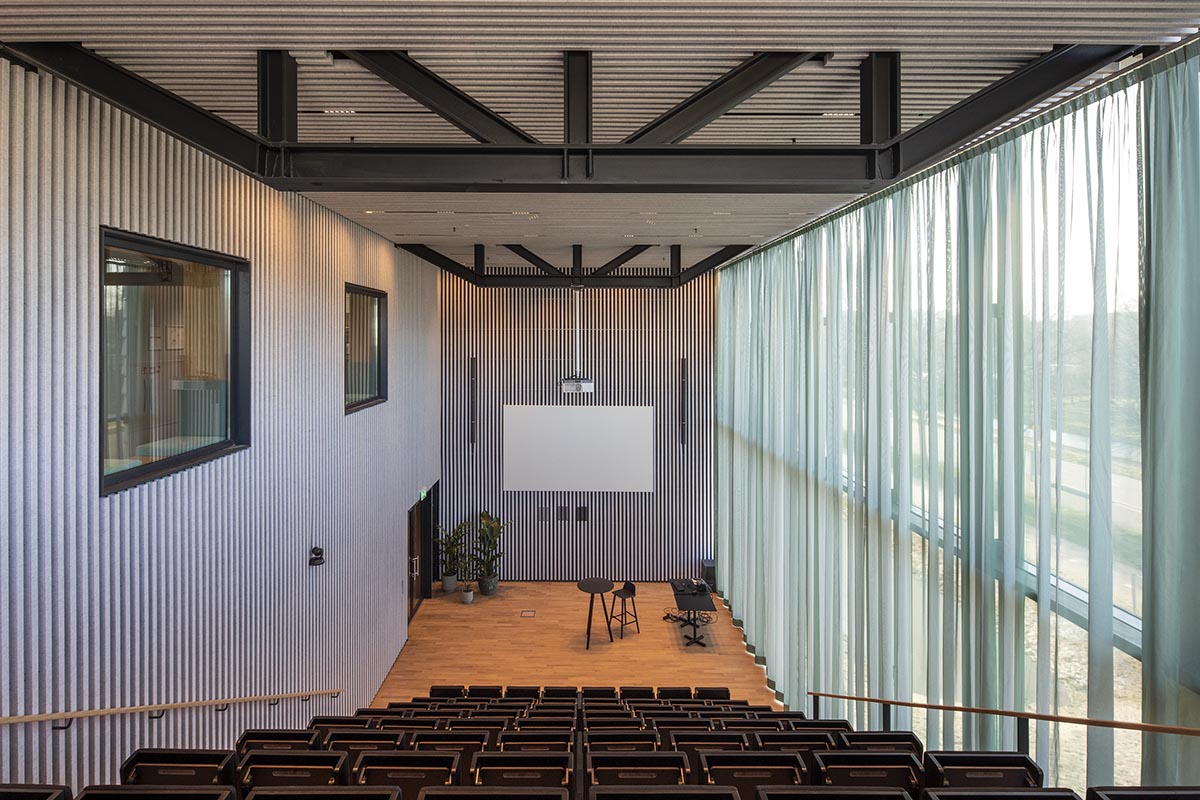
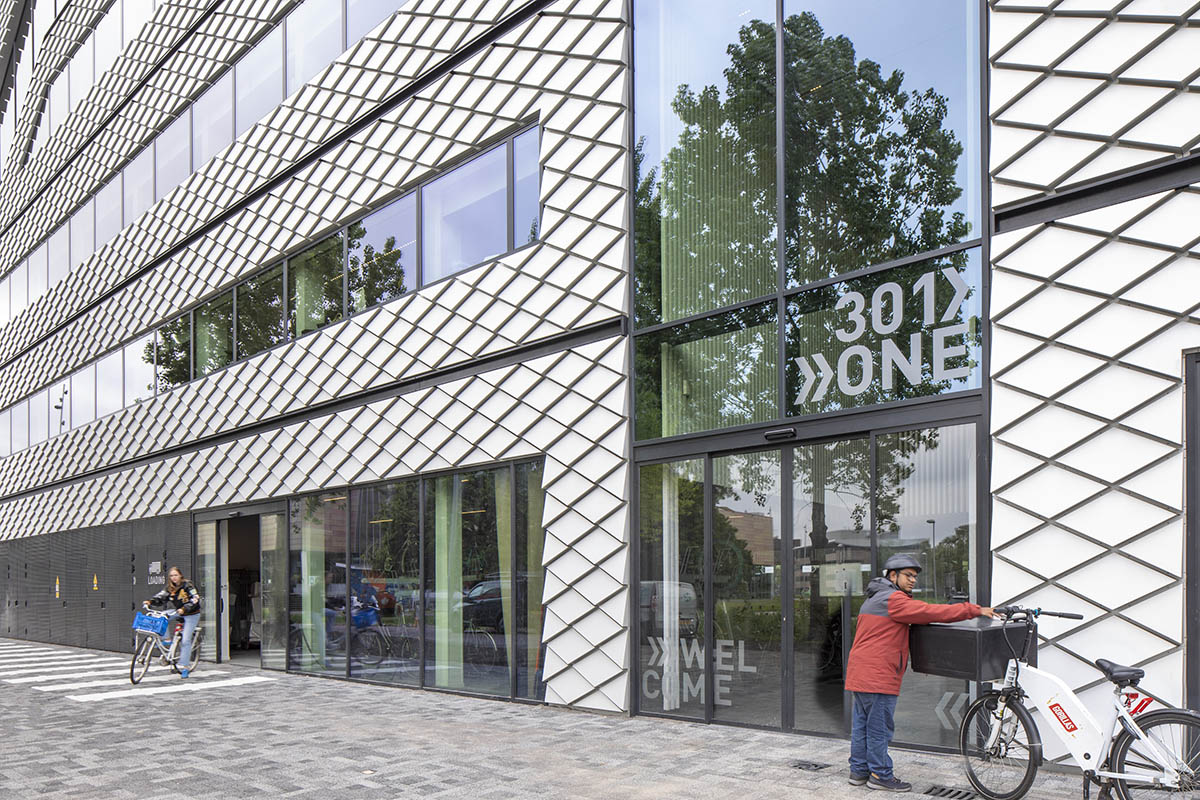
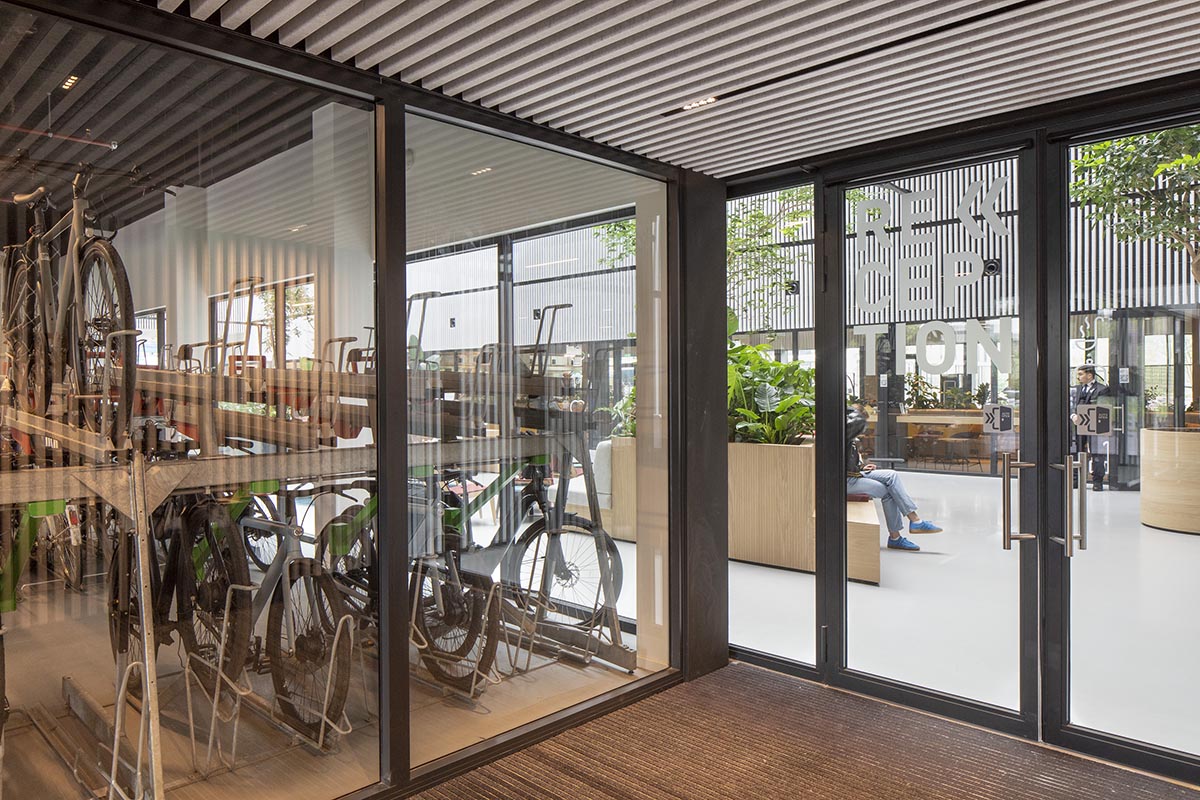
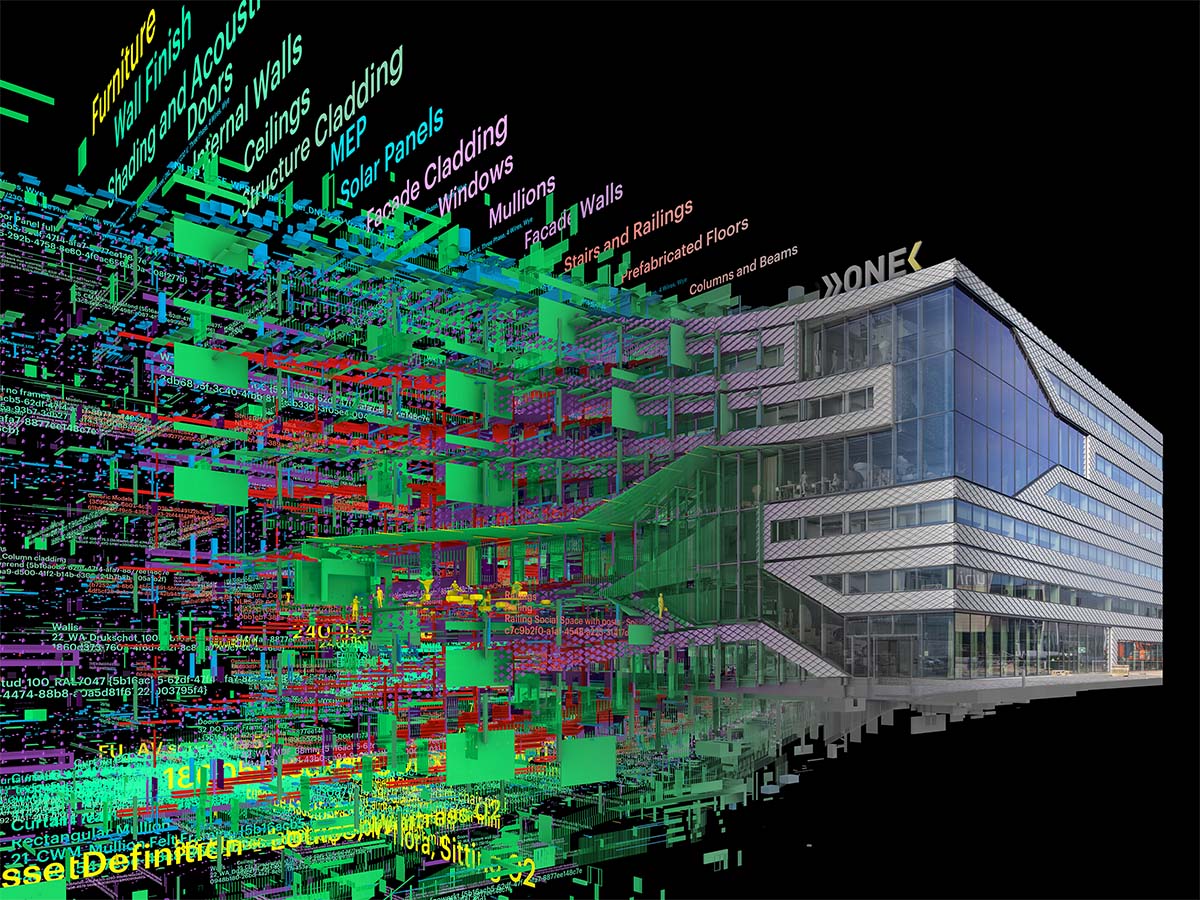
Currently, MVRDV won a competition to transform a former Hangzhou Oil Refinery Factory Park into an art and science museum, where a former industrial district sits alongside the southern end of China’s Grand Canal.
The studio revealed its first Uruguayan project, combining "urban and suburban lifestyle" in a dense vertical residential tower in Montevideo, Uruguay.
MVRDV was established in 1993 in Rotterdam, The Netherlands by Winy Maas, Jacob van Rijs and Nathalie de Vries. The office has four satellite offices in Shanghai, Paris, Berlin, and New York and engages globally in providing solutions to contemporary architectural and urban issues.
Project facts
Project name: Matrix One
Location: Amsterdam, the Netherlands
Year: 2018–2023
Client: Matrix Innovation Center
Size: 13,000m2
Sustainability certification: BREEAM-NL-Excellent
Architect: MVRDV
Partner: Frans de Witte
Design Team: Fedor Bron, Mick van Gemert, Roy Sieljes, Fouad Addou, Aneta Rymsza, Andrea Manente, Ievgeniia Koval, Lesia Topolnyk, Giuseppe Carosini, Damla Demir.
Visualisations: Antonio Luca Coco, Pavlos Ventouris, Luca Piattelli, Luana La Martina, Francesco Vitale, Gianlorenzo Petrini, Cinzia Bussola
Video: Yayun Liu, Josua Hefti, Alexander Forsch, Miruna Dunu
Copyright: MVRDV Winy Maas, Jacob van Rijs, Nathalie de Vries
Partners
Contractor: De Vries en Verburg
Project coordination: Stone 22
Landscape architect: Karres+Brands; Gemeente Amsterdam
Structural engineer: IMD
MEP, Building physics: Deerns
Cost calculation: IGG
Environmental advisor: ATKB
Interior architect: MVRDV; UP Architecture
All images © Daria Scagliola.
All drawings © MVRDV.
> via MVRDV
